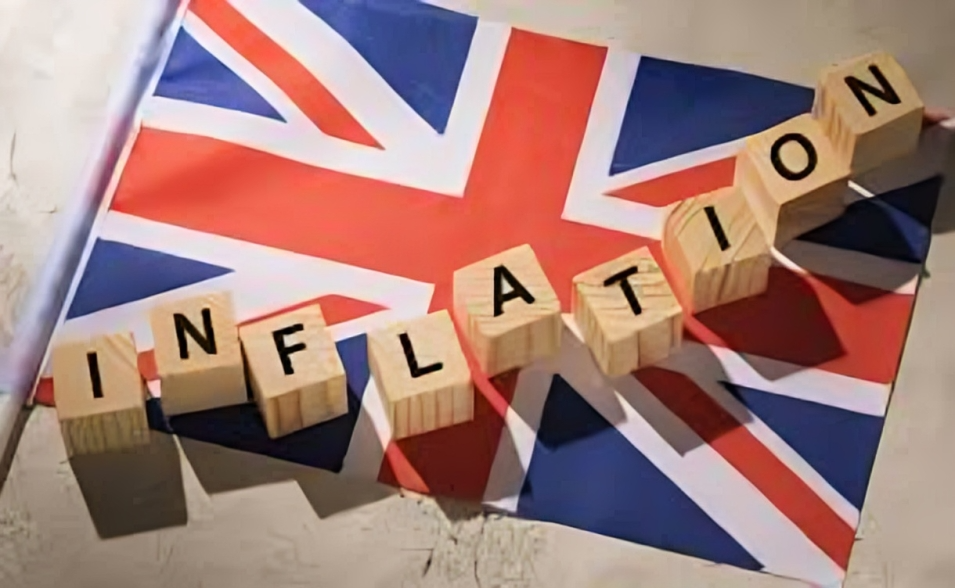UK Inflation is a crucial economic indicator that affects everyone, from consumers to businesses and policymakers. In the United Kingdom, inflation has become a significant topic of discussion in recent years, especially in light of global economic changes, supply chain disruptions, and the ongoing impacts of the COVID-19 pandemic. This article explores the causes of UK Inflation, its effects on the economy and daily life, and what the future might hold.
What is UK Inflation?
UK Inflation is defined as the rate at which the general level of prices for goods and services rises, leading to a decrease in purchasing power. It is measured using various indices, with the Consumer Price Index (CPI) and the Retail Price Index (RPI) being the most commonly referenced in the UK. When UK Inflation rises, each unit of currency buys fewer goods and services, impacting household budgets, savings, and investment decisions.
Current State of UK Inflation
As of late 2023, the UK has been grappling with significant inflationary pressures. Following a period of low inflation, the country has seen rates rise dramatically due to a combination of factors. The Bank of England, which aims to maintain UK Inflation at around 2%, has faced challenges in stabilizing prices amid a turbulent economic landscape.
In 2023, the CPI reached levels not seen in decades, peaking at over 10% at one point. Factors contributing to this surge included rising energy prices, increased costs of raw materials, and supply chain disruptions exacerbated by geopolitical tensions.
Key Contributors to Rising UK Inflation
- Energy Prices: One of the primary drivers of UK Inflation has been the soaring cost of energy. The global energy crisis, prompted by reduced supply from major producers and increased demand as economies reopened post-COVID-19, has led to higher prices for gas, electricity, and oil. As energy costs increase, so do the prices of goods and services that rely on energy for production and transportation.
- Supply Chain Disruptions: The COVID-19 pandemic significantly disrupted global supply chains. Many industries faced shortages of raw materials and components, leading to increased production costs. The delays and bottlenecks in shipping and logistics further contributed to rising prices.
- Labor Market Dynamics: The UK has experienced labor shortages in several sectors, including hospitality, construction, and transportation. With fewer workers available, companies have had to raise wages to attract employees, which can lead to higher prices for consumers as businesses pass on these costs.
- Monetary Policy: The Bank of England’s response to the economic fallout from the pandemic involved lowering interest rates and implementing quantitative easing. While these measures were necessary to support the economy during a crisis, they also increased the money supply, which can contribute to UK Inflation when demand outpaces supply.
- Consumer Demand: Following lockdowns, there was a surge in consumer demand as people returned to spending. This increase in demand, coupled with supply chain constraints, created upward pressure on prices.
Effects of Inflation on the UK Economy
The effects of rising UK Inflation are far-reaching and impact various aspects of the economy and daily life. Here are some key effects:
1. Erosion of Purchasing Power
As UK Inflation rises, the purchasing power of consumers decreases. This means that individuals and families can buy less with the same amount of money. Essentials such as food, housing, and transportation become more expensive, squeezing household budgets and potentially leading to a decline in living standards.
2. Increased Cost of Living
Rising prices affect the cost of living significantly. The increasing costs of essential goods and services force households to make difficult choices about spending. Many people may have to cut back on non-essential items, impacting businesses and potentially slowing economic growth.
3. Interest Rates and Borrowing Costs
In response to rising inflation, the Bank of England may decide to increase interest rates to help stabilize prices. While higher interest rates can curb inflation, they also lead to increased borrowing costs for consumers and businesses. This can result in reduced spending and investment, potentially slowing economic growth.
4. Impact on Savings and Investments
Inflation erodes the value of money over time, which affects savings. If the inflation rate exceeds the interest rate on savings accounts, individuals’ savings lose value in real terms. Investors may also face challenges as UK Inflation impacts the performance of various asset classes, leading them to seek inflation-hedged investments.
5. Uncertainty and Business Planning
High inflation creates uncertainty in the economy, making it challenging for businesses to plan for the future. Companies may struggle to set prices, manage costs, and forecast demand accurately. This uncertainty can lead to reduced investment and slower economic growth.
Future Outlook for UK Inflation
Looking ahead, several factors will shape the future of UK Inflation:
1. Energy Market Stability
The stabilization of energy markets will be crucial in determining the future inflation rate. If energy prices begin to fall and supply chain issues resolve, inflation could moderate. However, ongoing geopolitical tensions and climate-related disruptions may continue to pose risks to energy stability.
2. Monetary Policy Adjustments
The Bank of England’s approach to monetary policy will play a significant role in managing inflation. If inflation remains persistently high, the central bank may have to increase interest rates more aggressively. Conversely, if UK Inflation trends downward, there could be room for more accommodative monetary policies.
3. Global Economic Conditions
Global economic trends will influence inflation in the UK. Factors such as trade relationships, supply chain dynamics, and international commodity prices will impact domestic inflation. Monitoring these global factors will be essential for predicting future inflationary trends.
4. Wage Growth and Labor Market Recovery
The recovery of the labor market and wage growth will also affect inflation. If wages continue to rise rapidly, it may contribute to sustained inflationary pressures. However, if the labor market stabilizes without significant wage increases, inflation could be more manageable.
5. Consumer Behavior
As consumers adjust to changing economic conditions, their spending patterns will impact inflation. If consumers become more cautious in their spending due to rising prices, this could lead to decreased demand and help alleviate inflationary pressures.
Conclusion
UK Inflation has reached unprecedented levels, driven by various factors, including energy prices, supply chain disruptions, and labor market dynamics. The effects of rising inflation are felt across the economy, impacting purchasing power, the cost of living, and business planning.
As we look to the future, the trajectory of UK inflation will depend on a range of factors, including energy market stability, monetary policy adjustments, and global economic conditions. While managing UK Inflation presents challenges, understanding its causes and effects is essential for individuals and businesses alike.
By staying informed and adapting to changing economic conditions, consumers and policymakers can navigate the complexities of inflation and work toward a more stable economic environment.




